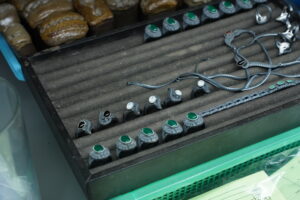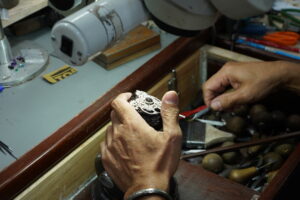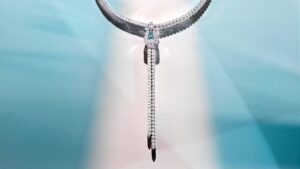The global jewelry market is increasingly shaped by consumer demand for individuality, cultural expression, and meaningful purchases. While ready-to-wear collections remain vital, a growing number of regions show strong preferences for custom-made jewelry. Understanding why these preferences arise and how they vary by region provides valuable insights for jewellery makers, retailers, and wholesalers alike.
This article explores the key drivers behind regional demand for custom jewelry, with a focus on market psychology, cultural influences, technological enablers, and production dynamics.
Jewellery Maker Insights: Why Some Regions Prefer Custom Orders

The Psychology of Personalization
Jewelry has always carried emotional weight, often marking milestones or expressing identity. In regions where consumers place a high value on symbolism and uniqueness, custom orders flourish.
- Emotional Connection: Consumers want pieces that tell a story or commemorate an event (e.g., engagements, anniversaries, births).
- Self-Expression: In style-conscious markets like the United States or South Korea, custom designs are viewed as extensions of personal identity.
- Gifting Culture: In regions like Southeast Asia and the Middle East, jewelry is a preferred gift for major life events, often made-to-order to reflect the occasion and recipient.
Regional Preferences and Cultural Drivers
- Middle East
- Gold Dominance: High demand for custom gold sets, especially for weddings and dowries.
- Family Involvement: Designs often include input from multiple family members and may involve heirloom integration.
- Symbolic Motifs: Arabic calligraphy, evil eye protection, and personalized talismans are common.
- South Asia
- Occasion-Based Buying: Wedding seasons drive demand for one-of-a-kind bridal sets.
- Cultural Aesthetics: Preferences for elaborate designs, filigree work, and colorful gemstones.
- Generational Tradition: Jewelry passed down in families often inspires new custom pieces.
- Europe
- Minimalist Personalization: Consumers in Scandinavia and Germany often prefer simple but meaningful customization engraved initials, birthstones, or geometric abstraction.
- Artisanal Focus: In France and Italy, buyers are drawn to custom jewelry for its association with craftsmanship and exclusivity.
- North America
- Design-Driven Choices: Emphasis on contemporary design and customization through online platforms.
- Ethical Sourcing & Storytelling: Custom orders often include recycled materials or conflict-free gems, chosen specifically by the buyer.
- East Asia
- Symbolism & Precision: Markets like China, Japan, and South Korea show high interest in symbolic elements (zodiac, numerology, nature).
- Digital Customization: Tech-savvy consumers enjoy using 3D configurators to create jewelry online before purchase.
Role of Technology in Enabling Custom Orders
Advancements in digital tools have significantly lowered barriers to entry for custom jewelry:
- 3D Modeling & Rendering: Clients can visualize designs before confirming orders.
- Online Customizers: Interactive tools allow users to select metals, stones, engravings, and sizes in real-time.
- Remote Collaboration: Platforms like WhatsApp, Zoom, and email make long-distance consultations easy for international clients.
Technology also allows for faster prototyping, transparent pricing, and detailed communication critical for cross-border customization.
Production Dynamics and Challenges
While demand is high, custom orders require flexible and skilled production systems:
- Skilled Artisans: Regions like Thailand and Turkey excel in small-batch, high-detail jewelry.
- Extended Timelines: Custom projects often require 30–45 days from design to delivery.
- Material Sourcing: Some custom requests involve rare stones or metals, requiring international procurement.
- Margin Considerations: While profit per unit is often higher, customization introduces unpredictability and potential inefficiencies.
Balancing creativity with consistency is key for jewellery makers scaling their custom order capabilities.
How Retailers Are Responding
To capture this demand, retailers are investing in:
- In-House Design Consultants: Offering one-on-one services in-store or online.
- Virtual Try-On Features: Helping customers envision pieces before committing.
- Collaborative Campaigns: Partnering with local artists or influencers to co-create custom collections.
Some platforms even allow customers to co-design products, creating emotional ownership and repeat business.
When Customization Becomes a Brand Differentiator
Brands known for ready-to-ship products are increasingly adding custom options as a competitive advantage:
- Engraving Services
- Stone Selection Features
- Build-Your-Own Jewelry Kits
In saturated markets, the ability to offer even semi-custom solutions builds stronger customer loyalty and enhances brand perception.
The Future: Hyper-Personalization and AI
Looking ahead, AI and data analytics will enable even deeper personalization:
- Predictive Custom Design: Algorithms that suggest personalized pieces based on browsing history or life events.
- Real-Time Custom Feedback: Systems that adapt design suggestions based on real-time input or previous purchase behavior.
- Customization at Scale: Efficient modular systems that allow mass-personalization with reduced production costs.
These innovations will further democratize custom jewelry, making it more accessible across income brackets and geographies.
Customization as a Cultural and Commercial Imperative
In many regions, custom jewelry is not just a luxury it’s a cultural expectation. Whether shaped by wedding rituals, identity expression, or gifting traditions, personalized orders reflect deeper social values.
For jewellery makers and retailers, understanding these regional dynamics is critical. With the right balance of technology, craftsmanship, and cultural insight, custom orders become not just a product line but a pathway to meaningful consumer relationships and long-term brand growth.



